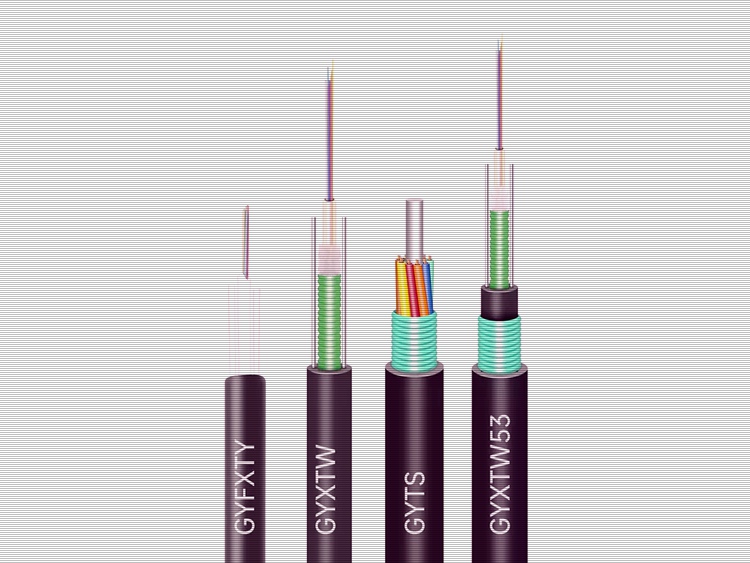Network Cabling
Understanding Armored Fiber Optic Cable: A Beginner Guide
Updated on 2023-03-01
In the fiber network, fiber optic cable is the primary and necessary medium to connect all the equipment. The most commonly seen fiber optic cable is the non-armored Fiber Optic Cable used in indoor applications. Another type of fiber optic cable is called Armored Fiber Optic Cable, which is used in harsher conditions and provides extra protection to the tube that houses the glass fibers. This post will introduce what it is, its benefits, and its classified types.
Table of Contents
- What is Armored Fiber Cable
- Benefits of Armored Fiber Cable
- Types of Armored Fiber Cable
- Final Words
What is Armored Fiber Optic Cable
Armored fiber optic cable is a type of fiber optic cable that has an outer jacket made of metal or plastic armor. The armor provides extra protection to the glass fibers inside the cable. It is suitable in harsher environments, such as outside or in areas with a lot of traffic. The armor also helps protect the cable from damage, which rodents, construction, or accidental knocks and cuts can cause.
Unlike the commonly non-armored fiber optic cable, the armored fiber cable has an additional outer protective layer. The armoring material can be metal braid, fiber, glass, or polyethylene. A typical armored fiber cable construction includes a dielectric core, Kevlar strength members, an aluminum Mylar tape, a stainless steel braid or corrugated aluminum sheath, and a polyethylene jacket. The below figure shows the construction of a typical armored fiber cable.

Benefits of Armored Fiber Optic Cable
There are many benefits to using armored fiber cables.
#1: Protect the fiber cable from physical harm
The first benefit is that the armor protects the fiber optic strands from physical harm. It may be significant in places with a lot of activity, such as construction or industrial areas. The armored fiber cable can also help prevent it from slicing or puncturing by sharp objects.
#2: Temperature and mechanical stress resistance
Armored fiber optic cables can also withstand higher temperatures than standard fiber optic cables. This is because the armor prevents the glass from being damaged by heat exposure. Those cables are also resistant to changes in temperature, which can cause damage to regular fiber optic cables.
In addition, they are less likely to be damaged by mechanical stress. This is because the armor prevents the glass from being damaged by changes in pressure or tension.
#3: Increased durability in harsh environments
Armored fiber optic cables are also more durable in general. This is because the armor protects the glass from being damaged by water, sunlight, or other environmental factors. They can also be buried underground without being damaged.
#4: Save maintenance costs
One of the most significant benefits is that it can help save on maintenance costs. This is because armored fiber cable is much more durable and damage-resistant than traditional fiber optic cable. As a result, you don’t have to worry about costly repairs or replacements as often.
#5: Increased lifespan
Armored fiber optic cable is intended to outlast non-armored fiber optic cables. The armored casing protects the fiber from harm, extending the cable’s life. In addition, armored optical fibers are less susceptible to environmental factors such as humidity and dust, reducing their lifespan. It can last 25~30 years, while regular fiber optic cables only last 10-15 years.
Types of Armored Fiber Optic Cable
Classification Based on Metal Tube
Based on the metal tube, we can divide it into interlock armored fiber optic cable and corrugated armored optic cable. Interlocking armor is an aluminum armor that is helically wrapped around a cable and is commonly encountered in indoor and indoor/outdoor cables. Corrugated armor is a coated steel tape wrapped longitudinally around the cable And is frequently seen in direct burial cables. Both armored fiber cables may be installed in dangerous situations, such as those with heavy dust, oil, gas, moisture, or even damage-causing rats.

Classification Based on the Application environment
According to the application environment, we can divide it into outdoor and indoor Armored Fiber Optic Cable.
Indoor Armored Fiber Cable protects the fiber in applications with rodent or physical damage concerns. The aramid yarns resist crush, while the steel tube protects against cutting and abrasion. Indoor Armored Fiber Cable suits data centers and other high-density cabling environments.
Outdoor Armored Fiber Optic Cable is used in direct burial or aerial applications. The corrugated steel tube provides crush resistance, while the aluminum interlocking armor protects against rodents and abrasion. It is used in long-haul applications such as campus backbones and building-to-building connectivity.
Final Words
Armored fiber optic cable is used in various applications for different purposes. It provides many benefits, such as increased durability, environmental resistance, and lifespan. By understanding the different types, you can make the best decision for your application.
Read more:
- Optcore MPO/MTP Fiber Cables Recommendation
- Ribbon Fiber Cable 101: Five Fundamentals of Ribbon Optic Cable
- 6 Reasons to use Pre-terminated Fiber
- How to Maximize ROI for Fiber Network?







